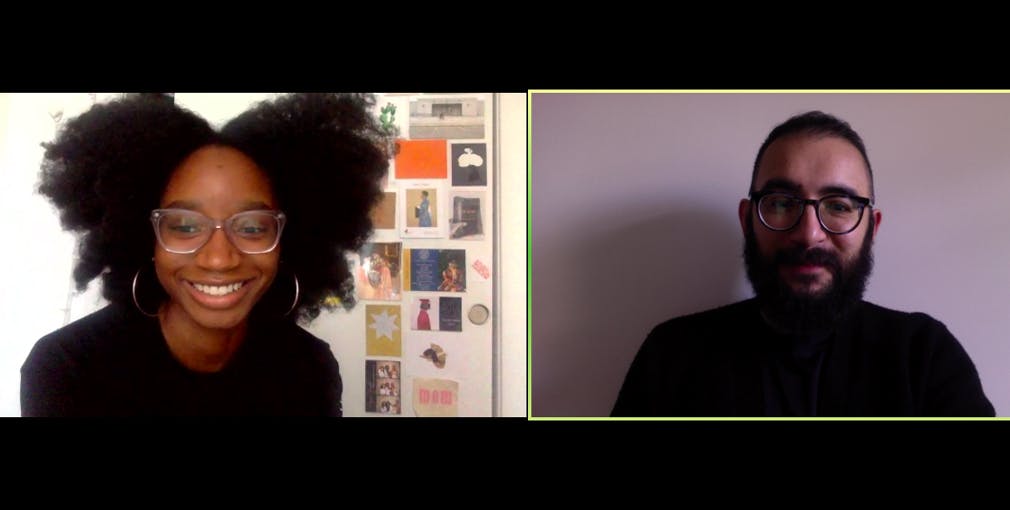Studio Check In With Amarie Gipson


Amarie, tell us about your position at the Studio Museum?
I am the Curatorial Assistant for the Permanent Collection at The Studio Museum in Harlem. I am at the crossroads of curatorial function and registration function—I’m caring for objects in a technical way, like data management, but also contextualizing and researching their histories.
What is something you’re working on in this moment of social distancing?
Part of my role in the Curatorial department is to be the point person for our Collection on the Web project, which entails uploading objects in our Collection directly to the Museum website. I am focusing on getting up as many works onto our website as possible, along with working directly with our Archives and Communications departments to sync our databases so we can increase accessibility for the public.
You’re based in Curatorial, but if you had to be in a department outside of your own, which department would you choose and why?
Public Programs! In my undergraduate years, I worked as the Editorial Director of a southern arts and culture publication called MUD. We had a lot of experimental gatherings that were focused on building and maintaining a community for people of color. That work has influenced my approach as a practitioner in the field, telling stories, and bringing visibility to artists. I also love film, so I would really want to be involved in conceptualizing some programs for Studio Screen.
If you could invite one of our alumni from the Artist-in-Residence program to a dinner party, who would you choose?
When I hear dinner party, I go right to my southern upbringing. I’m thinking of a long table of folks and a spread of food, so it’s Kerry James Marshall, Terry Adkins, Bethany Collins, Lauren Halsey, Autumn Knight, and Sable Elyse Smith. I want to talk about music with them, let people tell stories about travels—it’s a good intergenerational and multidisciplinary bunch.


"I want to read, see, and think about things as much as I can."
I knew you’d love that question. I recently took our Studio Museum & MoMA Fellows to visit with Sandra Jackson-Dumont on her last day at The Met, and she referred to former employees of the institution as “stars in a Black constellation,” people dotted around the country at leading arts and culture organizations. Can you think of a star with whom you hope to cross paths, someone you hope to form a constellation with?
I’ve been really fortunate to come into contact with many former employees of the Museum, but if I had to choose with whom I’d like to form a constellation, I’d say, Naomi Beckwith, Manilow Senior Curator at the MCA Chicago, and Rujeko Hockley, Assistant Curator at the Whitney Museum of American Art. Between the two of them, their exhibition histories have had the biggest impact on my own interests. And their commitment to scholarship—so crucial!
Amarie, you are brilliant. You exude energy and spirit (and it’s not just because you’re from Houston), and you are a pleasure to work with. You’re also at the genesis of your career, and from having worked with you and seen you in a couple of different settings now, I can tell you’re exactly the type of person who sets your mind to something and gets it done. What’s something you’d like to accomplish during your time at the Studio Museum, something that you hope to develop as you grow during your time here?
I want to read, see, and think about things as much as I can—to really get comfortable being an active participant in our field. I want to set myself on a path of discipline and feel equipped to walk into higher learning should I decide to do so.
Here I am, reading a stack of books by Duke University Press and, at the same time, recording a mix and talking with my video producer friends about documentaries. I want to continue to find a way to intersect this work and for it to be meaningful, impactful, and accessible to people. I want to make my own rules.
I’m from Houston. Where I’m from is relevant to me—I want my people back home to feel connected to and excited about what I’m doing. The South is in my veins. It’s a different type of sensibility that has informed the way I do work and the things I want to achieve. Being here in New York, being at the Studio Museum, gives me a dimension that allows me to see multiple worlds and bridge them.